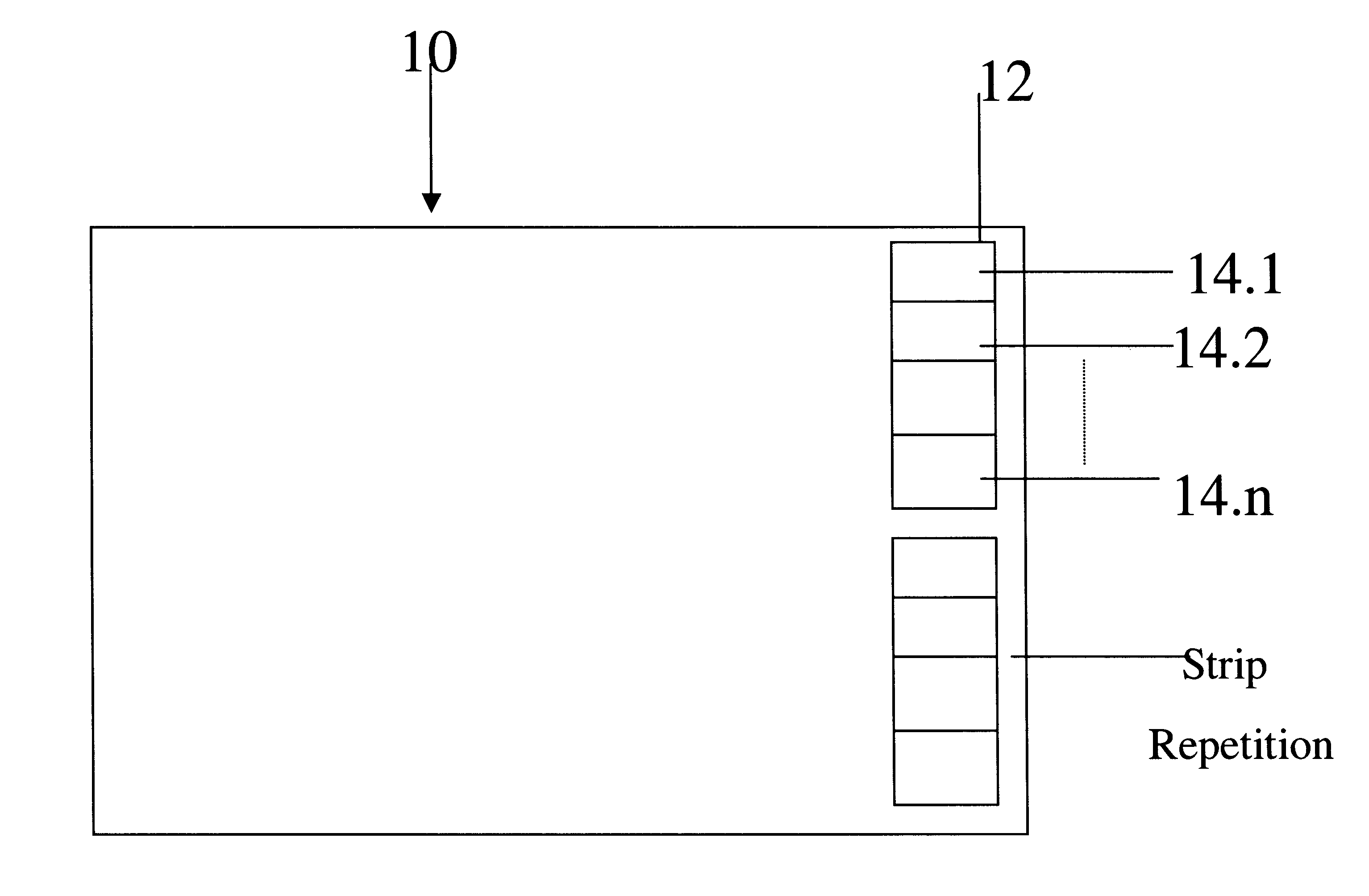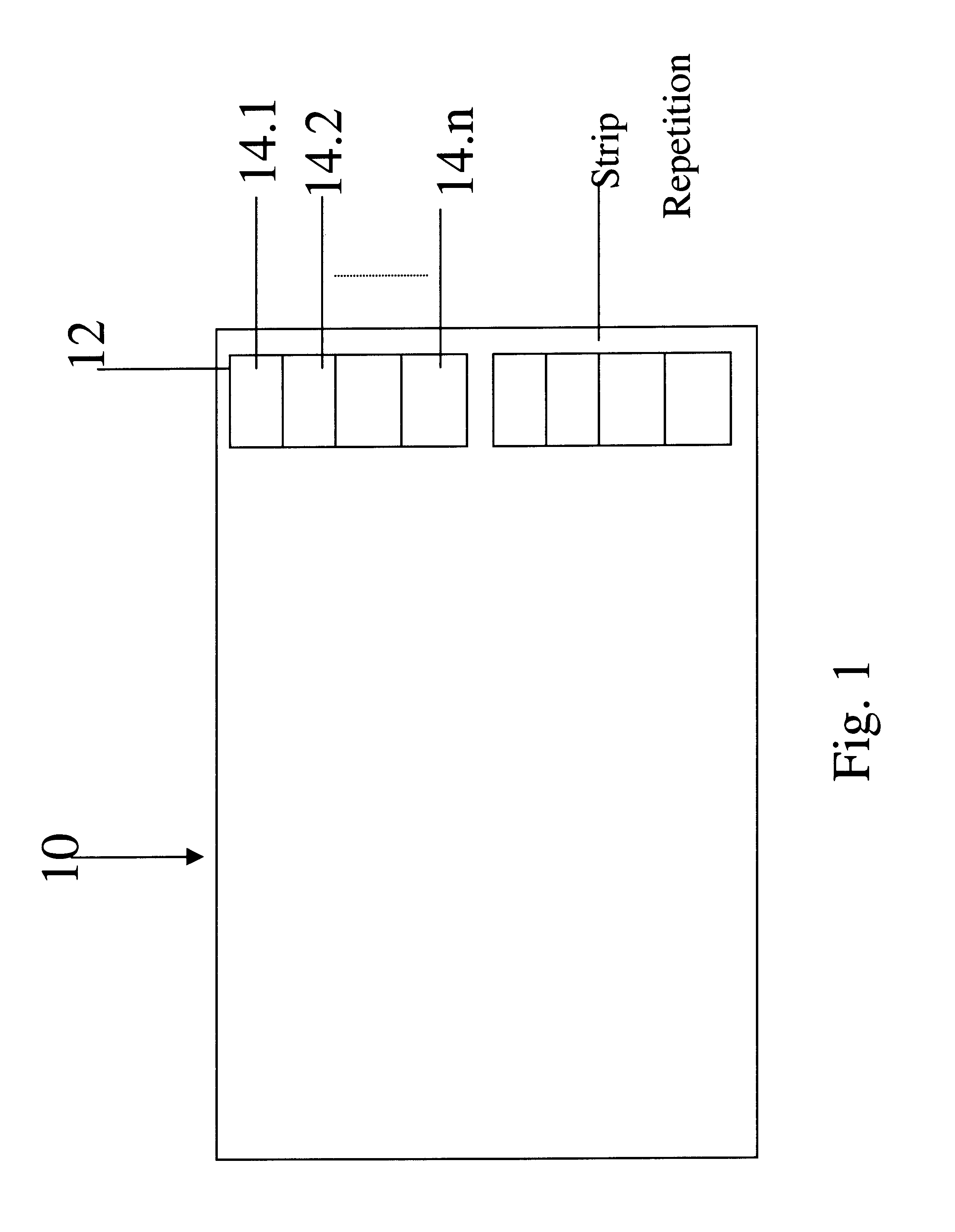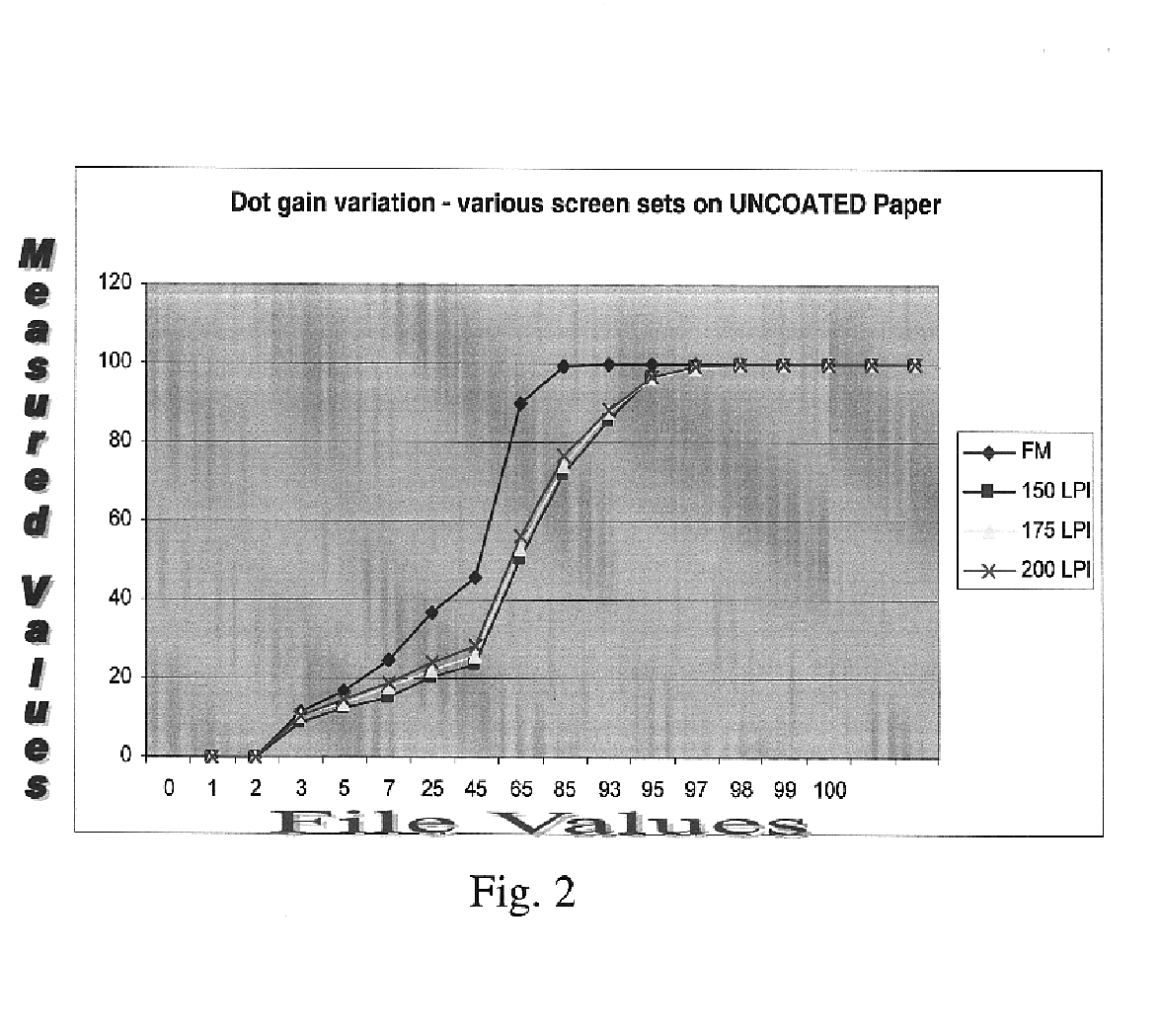Dot gain calibration method and apparatus
a technology of gain and calibration method, applied in the field of dot gain calibration method and apparatus, can solve the problems of high cost of current calibration cycle on-press compensation, difficult and time-consuming task, and high cost of above-cycl
- Summary
- Abstract
- Description
- Claims
- Application Information
AI Technical Summary
Benefits of technology
Problems solved by technology
Method used
Image
Examples
Embodiment Construction
[0104]The present embodiments disclose a system for dot gain calibration which is easy to carry out and therefore suitable for closed loop implementation, including scenarios in which parts of the print process are carried out remotely from each other. The system involves the incorporation onto the printing plate of a calibration strip. The content of the strip is standard, so that color measurements carried out on paper printed from the calibration strip indicate the dot gain under the current print conditions.
[0105]The principles and operation of a dot gain calibration method and apparatus according to the present invention may be better understood with reference to the drawings and accompanying descriptions.
[0106]Before explaining at least one embodiment of the invention in detail, it is to be understood that the invention is not limited in its application to the details of construction and the arrangement of the components set forth in the following description or illustrated in...
PUM
 Login to View More
Login to View More Abstract
Description
Claims
Application Information
 Login to View More
Login to View More - R&D
- Intellectual Property
- Life Sciences
- Materials
- Tech Scout
- Unparalleled Data Quality
- Higher Quality Content
- 60% Fewer Hallucinations
Browse by: Latest US Patents, China's latest patents, Technical Efficacy Thesaurus, Application Domain, Technology Topic, Popular Technical Reports.
© 2025 PatSnap. All rights reserved.Legal|Privacy policy|Modern Slavery Act Transparency Statement|Sitemap|About US| Contact US: help@patsnap.com



